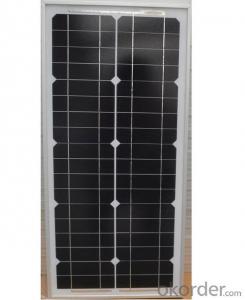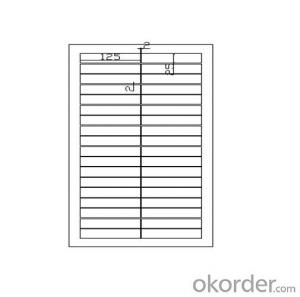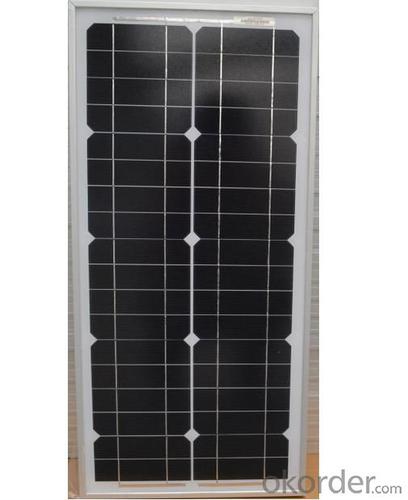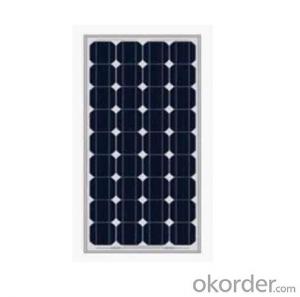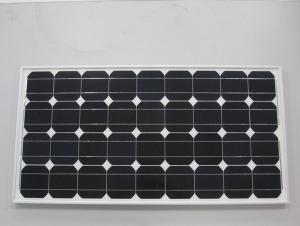Dyson Solar Panels Mono Panel HSpv10wp-36m
OKorder Service Pledge
Quality Product, Order Online Tracking, Timely Delivery
OKorder Financial Service
Credit Rating, Credit Services, Credit Purchasing
You Might Also Like
HSPV10Wp-36M
futures
※ High efficiency crystalline silicon cells.
※ High transmission low iron tempered glass, strong mechanical resistance.
※ Standard waterproof junction box, with bypass diode.
※ High endurance to different atrocious weather
※ IEC 61215 and IEC61730 Class A certificates
※ Conformity to CE.
※ Applicable to residential roof top systems, On-grid/Off-grid utility, commercial system.
※ 10-year quality guarantee and 10 - 25-year power output guarantee.
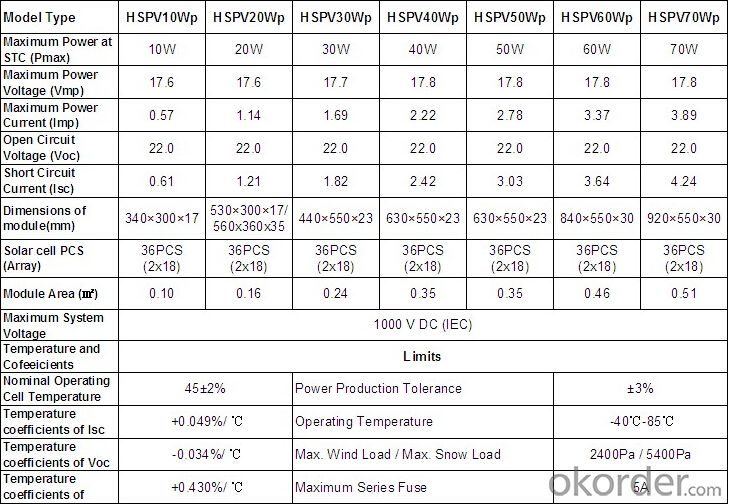
- Q: Ok Im trying to power my room using solar panels and I've figure out that I need about 700 watts to do so, but I really only use my electronics at night. I was wondering if I could buy lets say a 200 watt solar panel and let it charge a battery all day would that work? I live in southern california so I dont have to worry to much about cloudy days. also any suggestions on where to buy a panel, inverter, charge regulator, and battery?
- What you really need to calculate is your energy requirements, you are only stating your power requirements. Power (W) = how many watts of power are you using? Time (h) = how long are you going to use the power for? Energy requirement(Wh) = W * h take the answer to that equation and plug it into the exact same equation except substitute how much sunlight you get for h and then solve for W to find what you need in the way of a solar panel. Wattage of solar panel (W) = Energy requirement (Wh)/hour of sunlight per day (h) Now you know what wattage of solar panel you need. For the battery you use a different equation: Energy in the Battery(Wh) = Battery Voltage (V) * Current Capacity (Ah) Solving for Current Capacity: Ah = Wh / V This will tell you how big a battery you need, but you also need to be concerned about how much current it can source. For this you need to know what your peak power requirement is. Wmax = peak power requirement Max discharge current (Amax) = Wmax / Vmax Also you will need an inverter rated to Wmax as well.
- Q: ) what is absolutely needed to hook up a solar panel to grid tie, what permits and/or inspectors are needed?2) if we know how many KWH's we use per month, do we just divide by number of hours per month to find out average KW usage?3) what is an estimated ratio of DC to AC transformation/convertion @ 30 C?4) do the solar panel voltages have to be the same? what would happen if the voltage going into the house is greater/lower than that of the house's defualt voltage5) for added chance of getting 0 pts add some contrators that do business in ohio for installing solar panels or sell them
- The okorder The reference section has all the formulas you are looking for and there is a list of dealers by state, plus various state rebate information. Yes, you can hook up different panels to the same system. There are special controllers that regulate the voltage. I'm more of a hands on nuts and bolts guy so I can't help you with the formulas and engineering explanations. Another great place to get information is Home Power Magazine. You can get the issues online or in print. Thanks for going solar!
- Q: Are there any health risks associated with solar panels?
- Overall, solar panels do not pose significant health risks. They are a safe and environmentally friendly source of energy. However, some minor risks can include potential electrical hazards during installation or maintenance, such as electric shock or fire. Additionally, the production and disposal of solar panels may involve certain toxic materials, although efforts are made to minimize their impact. Nonetheless, these risks are generally well-managed and can be mitigated through proper installation, maintenance, and adherence to safety guidelines.
- Q: I have to get a lot of information on how solar panels are developed and distributed in America because I have to do two pages on this. Please help me get information in this I really need it!! Thankss...
- The first link below is one of the best sites for recent news about solar panels. You should be able to find stories about solar panels under development today. A little bit of the history: Solar panels have been around for about 50 years now. They were first used to power spacecraft. Solar power for domestic use started to develop rapidly in the 970's during the first oil crisis, but as energy prices fell in the 980's solar development slowed. Most of the large solar panel makers were purchased by large oil companies who seemed not to be too interested in solar. In the late 990's as concerns about both Peak Oil and Global Warming grew there was renewed interest in solar power and a number of new companies were started to develop new kinds of solar panels. Many of these new companies have grown larger than the older solar companies still owned by big oil companies. Over the last 7 years or so growth in the solar market has been explosive with a compound growth rate of almost 40% per year. In 2005 the solar industry for the first time started to consume more silicon than all other electronic industries combined resulting in a world wide silicon shortage that is still with use. New silicon refineries are coming on line and the shortage is expected to diminish by 2008 or 2009. Check out the two links below. They will help you a lot.
- Q: When you add a load resistor to a PV panel (Solar panel) of 00 ohms what happens to the voltage produced from the cellAlso, as the resistance increases, how does this affect the output voltage
- Photovoltaic cells have a load curve that gives the power conversion based on the current drawn. This makes it harder to calculate. For instance, at infinite resistance, the solar cell will have a peak voltage that produces no power (P=I*V=V^2/r). At short circuit, the voltage collapses to essentially nothing and so the power is almost nothing. There is an optimal load (sweet spot) where the resistance applied will draw the most power out of the cell while not overloading it. This measure is either given by the manufacturer or found experimentally. Upon taking a lit panel that has no load and applying a 00 ohm resistance, the voltage will drop. By how much is entirely dependent on the array layout and specific cell characteristics. As the resistance drops from the optimal load point, the voltage collapses fairly sharply. As the resistance increases from the optimal load point, the voltage will rise more at first and then level off to the peak or no-load voltage.
- Q: The battery is 9ah and the solar panel is 20w
- Buy the proper charger or get a degree. Don't screw with making a charger for a lead acid battery of you don't know what you are doing. You could get hurt. You need a hell of a lot more than just a regulator.
- Q: Can solar panels be used in areas with high levels of snowfall?
- Yes, solar panels can be used in areas with high levels of snowfall. However, the performance and efficiency of the panels may be affected during snowy conditions. Regular snow removal or tilted mounting angles can help maximize their effectiveness in such areas.
- Q: I have created a solar setup in my shed i have 2x.5w solar panels i am hoping to charge my 55ah car battery how long would it take to charge the battery and how many watts could i used a day
- Quite a while. I am assuming you are using 2 volts as your buss power. The small panels were intended as a float charge for batteries to keep them from discharging over a period of time. 3 Watts means only /4 Amp. Normally when I do slow charging of batteries, I am using right around amp, and that takes about a week to bring up a battery that was discharged past 80 percent capacity. When you factor in losses from corrosion, battery self discharge, and loose connections, you will likely want to add more panels. using your 55Amp/hour battery, a amp charger running constant in a perfect world would take 55 hours. Real world, probably closer to 64 to 72 hours. That for simplicity is 5 Watts constant charge power. Now you are using /5 of that with your current setup. so 5 times longer, whichh puts you in the 300 hour range of real world, or 220 hours of perfect world. This time of year, you may have about 8 hours worth of charging light, which puts you at close to a month. Don't fret. If you are using it for lighting in a shed, Power LEDs and tethering some of the inexpensive LED lights to the 2 volt source will give you plenty of light for a very long time, the panels will help some, but you will likely need to put the batteries on a charger, or you can build a gas powered 2 volt generator easily enough. Charge it up only when needed.
- Q: How much would it cost (approximately) to convert my home (3 bed. 2 bath) to a green home that is run entirely upon solar panels on my roof? From the panels through installation does anyone know a price break down?
- Either you, or someone else, asked this same question yesterday, and the answers given were that it is not possible for us to answer it. The costs depend on where your home is located, what prevailing local labor rates are, how difficult it is to get the equipment to the site, etc, etc. I think one of the answers was that for a 3 bedroom, 2 bath house the cost for all the necessary equipment listed would be in the neighborhood of 20 to 30 THOUSAND DOLLARS. I think that was an underestimate, and that it could be 40 to 50 THOUSAND!!!!! The answerer also pointed out that due to the exorbitantly high costs of the technical equipment that at this time the equipment will wear out BEFORE IT EVER CAN PAY FOR ITSELF IN SAVINGS for on the grid electricity. I agree with that. You need to discuss your wants with 3 or 4, even 5 or 6 LOCAL ELECTRICAL CONTRACTORS to get a reasonably accurate estimate of the costs!!!!!!
- Q: I need to have more information about what are solar panels. will you help me?
- Solar panels are made up of lots of solar cells. They don't give loads of energy. A line goes around the cells and... that's all I know lol
Send your message to us
Dyson Solar Panels Mono Panel HSpv10wp-36m
OKorder Service Pledge
Quality Product, Order Online Tracking, Timely Delivery
OKorder Financial Service
Credit Rating, Credit Services, Credit Purchasing
Similar products
Hot products
Hot Searches
Related keywords
